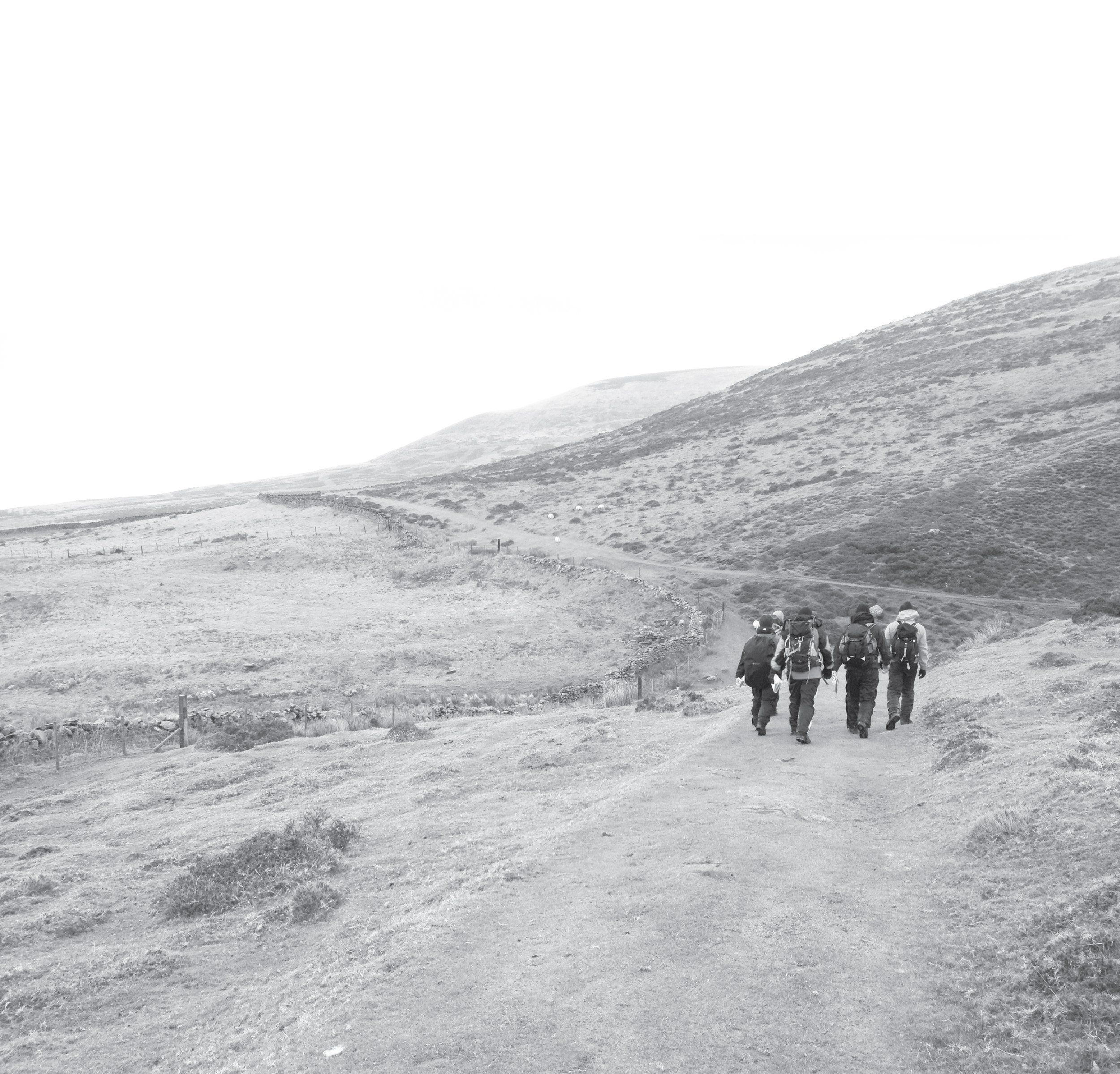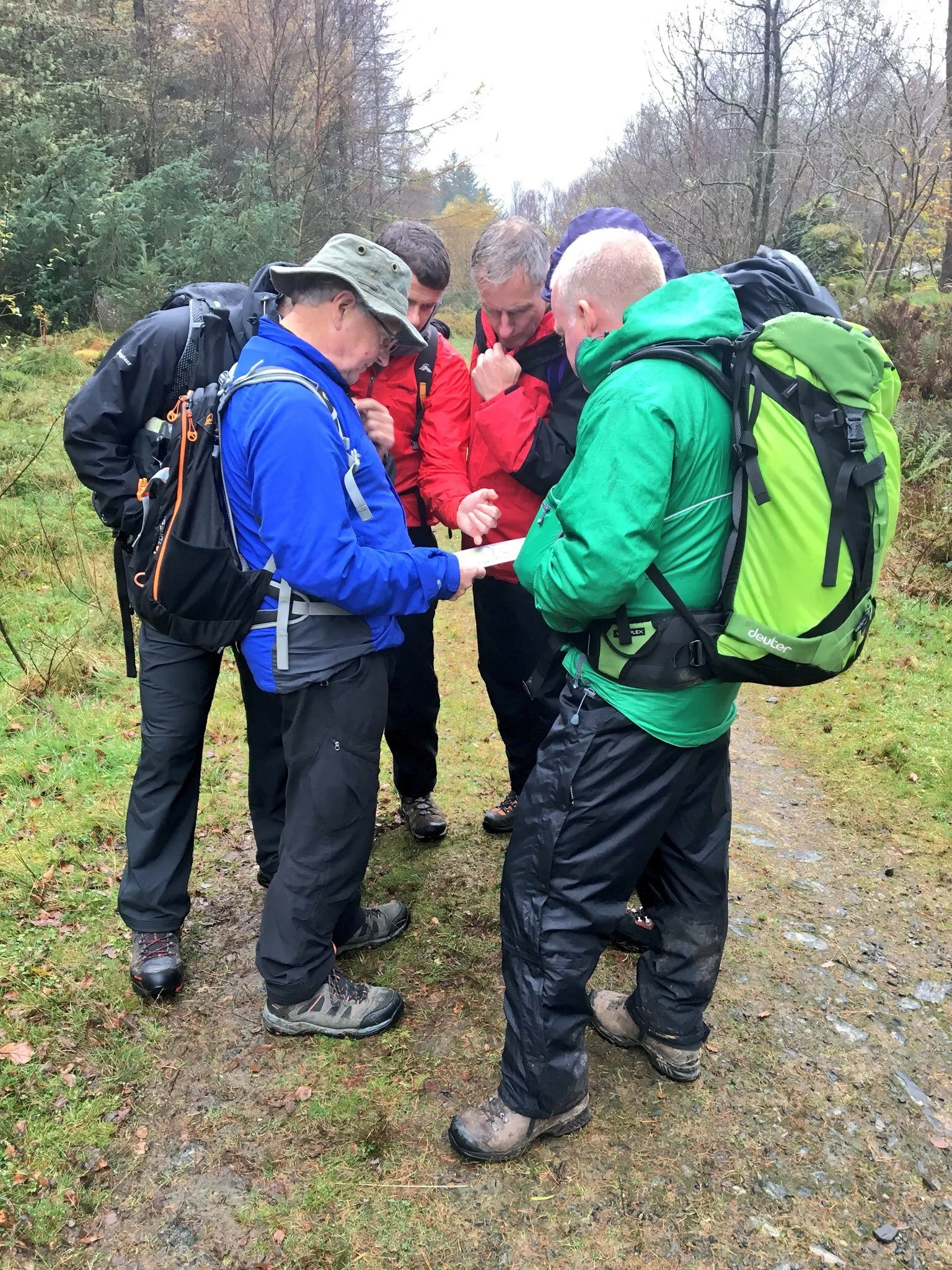
Mountaineering Skills
Bryn Williams Mountaineering offers a variety of Mountaineering skills courses for mountaineers of all levels, from beginners to seasoned experts. Learn navigate in the mountains. Improve your mountaineering skills. Learn to scramble or advance into roped scrambling.
Mountaineering Skills Courses run by Bryn Williams Mountaineering in North Wales.
Mountaineering skills courses
-
NAVIGATION & MOUNTAIN SKILLS
Become more independent and confident when walking in the mountains.
-
SCRAMBLING SKILLS
Become more independent and confident in steeper ground or learn the ropes for advanced roped scrambling
Navigation & mountain skills
We offer private tuition from 1 day through to 5 day courses in navigation and mountain skills. This is ideal for anyone looking to become more independent and confident for mountain walking. We work with all abilities from novice through to advanced.
Cost: 1 person £220 per day.
Cost: 2 - 3 people £250 per day.
Cost: 4 people +£65 per person, per day.
Scrambling skills
We offer private tuition from 1 day through to 5 day courses in scrambling and roped scrambling. This is ideal for anyone looking to become more independent and confident in steeper ground or wishing to learn the ropes for advanced roped scrambling. We work with all abilities from novice through to advanced.
Cost: 2 - 3 people £250 per day.
Cost: 1 person £220 per day.
Cost: 4 people +£65 per person, per day.



Mountaineering Skills frequently asked questions
-
To be a successful mountaineer, several key skills are essential:
Technical Climbing Skills: Proficiency in various climbing techniques, including rock and ice climbing, is crucial. This includes the ability to use climbing gear such as ropes, harnesses, carabiners, and crampons efficiently.
Navigation: Understanding how to read maps, use a compass, and utilise GPS devices is vital for safely traversing mountainous terrain. Knowledge of topographical features and an ability to navigate in poor visibility conditions are also important.
Physical Fitness: Mountaineering requires a high level of physical fitness. Cardiovascular endurance, strength, flexibility, and stamina are necessary for managing the physical demands of climbing and hiking.
Weather Assessment: The ability to interpret weather conditions and forecasts is essential. Mountaineers need to recognise signs of changing weather and be able to make decisions based on this information to ensure safety.
Risk Management: Understanding the risks involved in mountaineering, including avalanches, rock fall, and altitude sickness, is critical. This includes assessing situations quickly and making sound decisions to mitigate dangers.
First Aid Skills: Basic first aid knowledge is invaluable. Being able to respond effectively to injuries or emergencies can be lifesaving in remote or challenging environments.
Teamwork and Communication: Effective communication and the ability to work collaboratively with other team members are vital, especially in high-pressure situations. Trust and coordination can greatly enhance safety and efficiency.
Mental Resilience: The psychological aspects of mountaineering cannot be underestimated. Mental fortitude helps climbers deal with challenges, fatigue, fear, and the pressures of difficult climbs.
Self-sufficiency: Being able to manage your own equipment, plan and execute climbs independently, and troubleshoot problems as they arise is essential for a successful mountaineer.
Knowledge of Environmental Stewardship: Understanding the impact of mountaineering on the environment and employing Leave No Trace principles is essential for preserving the natural beauty of mountainous areas.
Fostering these skills through practice, training, and experience can contribute significantly to becoming a competent and safe mountaineer.
-
Improving navigational skills is essential for safe and effective outdoor experiences. Here are some strategies to enhance your abilities:
1. Study Maps
Familiarise yourself with different types of maps, such as topographic and geological maps. Learn to read contour lines, symbols, and scales to understand elevation and terrain.
2. Use a Compass
Practice using a compass regularly. Learn how to take bearings, orient the map to the terrain, and understand declination. This will assist in maintaining accurate navigation.
3. Develop Land Navigation Skills
Engage in exercises that combine map reading and compass use. Navigate to specific features in your local area using both tools to gain confidence.
4. Take a Navigation Course
Consider enrolling in a navigation course or workshop led by experienced instructors. This structured learning can provide hands-on experience and valuable insights.
5. Practice Regularly
Like any skill, regular practice improves proficiency. Spend time outdoors navigating using only a map and compass; this builds confidence and enhances understanding.
6. Use Technology
Familiarise yourself with GPS devices and navigation apps, but remain aware that technology can fail. Learn to be proficient with traditional methods as a backup.
7. Read Navigation Books
There are various books available on navigation that can provide in-depth knowledge. Look for titles that are well-reviewed for practical guidance and illustrations.
8. Join a Navigation Group
Participate in local hiking or mountaineering groups focused on navigation. Practising with others can provide additional tips and motivation.
9. Reflect on Experiences
After each outing, reflect on your navigation techniques. Consider what worked and what didn’t, and make adjustments to improve on future trips.
10. Embrace Challenges
Challenge yourself with unfamiliar terrains. This will push you to adapt and develop problem-solving skills crucial for effective navigation.
By engaging in these practices, you will gradually enhance your navigational skills, contributing to safer and more enjoyable outdoor activities.
-
Rock scrambling is an exhilarating way to navigate rocky terrain, requiring both physical fitness and technical skills. Here are some fundamental skills to enhance your scrambling abilities:
1. Footwork
Balance: Maintain a low centre of gravity by bending your knees. Use your feet to find the best holds and avoid unnecessary slips.
Placement: Be mindful of where you place your feet. Look for stable rocks or protrusions that can support your weight.
2. Handholds
Grip: Use your hands to assist with balance and stability. Look for secure handholds like ledges, cracks, or juts in the rock.
Three Points of Contact: Aim to maintain three points of contact (two hands and one foot, or two feet and one hand) with the rock at all times for optimal stability.
3. Body Positioning
Core Engagement: Keep your core engaged to support your body and help maintain balance.
Body Alignment: Position your body to face the rock as much as possible. This reduces the risk of falling and facilitates better control.
4. Route Finding
Observation: Study the terrain ahead to identify the most effective and safest route. Consider the difficulty of different sections and choose wisely.
Navigation Skills: Familiarise yourself with maps and compasses to help you plan routes and find your way during longer scrambles.
5. Problem Solving
Adaptability: Be prepared to change your approach if the route becomes more difficult than anticipated.
Risk Assessment: Evaluate potential hazards and make decisions based on your skill level and the conditions of the rock.
6. Equipment Knowledge
Gear Familiarity: Understand the basic equipment used in scrambling, such as ropes, harnesses, and helmets, if necessary.
Safety Kit: Carry essential safety gear, including a first-aid kit, a map, and provisions for communication.
7. Judgement
Self-Awareness: Know your limits and recognise when a route may be too challenging for your skill level.
Group Dynamics: If scrambling with others, communicate effectively and manage pacing to ensure everyone's safety.
8. Physical Conditioning
Strength Training: Focus on developing upper body strength, grip strength, and core stability, which are crucial for effective scrambling.
Endurance: Improve cardiovascular fitness to help sustain energy over longer periods of scrambling.
By mastering these basic skills, you can enjoy the thrill of rock scrambling while ensuring safety and efficiency on your adventures.
-
Scrambling often involves moving over rocky or uneven terrain where the use of a rope may enhance safety and security. Here’s a guide on how to effectively use rope while scrambling.
1. Understand the Terrain
Before using rope, assess the terrain and the difficulty of the scramble. Identify sections that may require additional support, such as ledges, steep ascents, or exposure to falling.
2. Choose the Right Rope
Select a dynamic climbing rope for better absorption of forces in case of a fall. A rope with a diameter of 9.5 to 10.5 mm is often ideal for scrambling environments.
3. Use Appropriate Gear
Whether on the rock face or traversing tricky sections:
Harness: Wear a properly fitted harness to ensure safety and comfort.
Carabiners: Use locking carabiners to prevent accidental uncliping.
Slings: Consider using slings for creating anchors or if you need to extend your reach.
4. Establishanchors
When approaching a section that requires a rope, establish solid anchors. Look for stable rock features or use existing fixed gear if available. Ensure the anchor can withstand the forces expected during a fall.
5. Belaying Techniques
If you are leading a section, communicate with your partner about who will be leading and who will be belayed:
Direct Belay: The belayer stays at a distance to provide support while the lead climber ascends.
Micro Adjust: Use a technique like a “clove hitch” or “figure of eight” to adjust slack as needed.
6. Moving Together
When both climbers are on the same rope, the following techniques can help:
Short Roping: Keep the rope short to maintain tension and reduce fall potential. The second climber remains close to the leader.
Team Movement: Sync your movements to conserve energy and maintain rope slack management.
7. Safety Measures
Always practice good safety:
Plan for Falls: Each climber should know their role and ensure the belayer is prepared for potential slips.
Communication: Establish clear signals for ascending, stopping, or any changes in pace.
8. Descending
When descending, assess whether to rappel or use the same route. If rappelling:
Always set up a double anchor.
Use a belay device for controlled descent.
Communicate with your partner about the descent technique and ensure they are secure.
Conclusion
Using rope when scrambling enhances safety and confidence on challenging routes. Buckle up, make sure all gear is functioning properly, and ensure good communication with your partner throughout the experience. With these practices, you can enjoy the thrill of scrambling while minimising risks.
-
Hiking and scrambling are both outdoor activities that involve moving through natural environments, but they differ in intensity, terrain, and technique.
Hiking is typically characterised by walking on established trails, which can vary in difficulty from easy paths to more challenging routes. The focus of hiking is generally on movement over land rather than on climbing. Hikers usually do not require specialised equipment beyond appropriate footwear and possibly poles for stability. The gradient and terrain may vary, but hikers can expect well-defined pathways.
Scrambling, on the other hand, is a more technical activity that combines elements of climbing with hiking. It often involves ascending steep or rugged terrain where hands are used for balance and support. Scrambling may take place on rocks, boulders, or exposed ridges and can occur on routes that do not have clear paths. While scrambling can be done without ropes, it may include sections that require a more cautious approach and increased physical effort. It often necessitates a good level of fitness, confidence in one’s climbing ability, and sometimes basic climbing gear.
In summary, while both hiking and scrambling allow individuals to enjoy the outdoors, scrambling demands a higher level of physical and technical skill, often requiring navigational judgement and risk assessment in more challenging landscapes.

“Bryn is an outstanding instructor. Hugely knowledgable, with a great depth of experience which he uses to adapt his approach to your learning style”
Choose your next course















